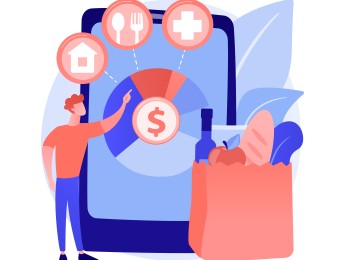This course provides a comprehensive understanding of advanced rigging and heavy lifting operations for offshore and onshore environments. Participants will learn to plan, execute, and assess lifting projects with a focus on safety, efficiency, and compliance with international standards. The training emphasises practical applications, including strength calculations, sea fastening design, equipment selection, and risk management, ensuring participants gain the skills needed for real-world operations.
Upon completing this course, participants will be able to:
- Plan and execute heavy lifting operations in offshore and onshore environments.
- Perform detailed strength and sea fastening calculations for lifting and transit phases.
- Select and inspect rigging equipment based on operational requirements.
- Ensure compliance with safety regulations and industry standards.
This course is designed for:
- Engineers and project managers involved in lifting operations.
- Offshore and onshore logistics professionals.
- Rigging supervisors and safety officers.
- Marine and structural engineers seeking specialised knowledge in heavy lifting.
- Professionals responsible for planning and overseeing lifting operations.
The training employs a blend of theoretical and practical approaches to maximise learning. Participants will benefit from in-depth lectures covering advanced lifting and rigging concepts, as well as case studies showcasing real-world successes and challenges in heavy lifting. Hands-on workshops will allow participants to develop lifting and securing plans while performing detailed calculations. Simulations and practical exercises will provide opportunities to practise real-world scenarios, including mock lifting operations. Regular assessments will be conducted to ensure participants fully understand and can effectively apply the key concepts covered during the course.
Day 5 of each course is reserved for a Q&A session, which may occur off-site. For 10-day courses, this also applies to day 10
Section 1: Introduction to Rigging and Lifting Operations
- Overview of rigging and lifting: Introduction to the fundamentals of rigging and lifting in offshore and onshore operations. Participants will explore different types of lifting operations, including complex multi-point lifts, to understand their application and challenges.
- Key equipment: Detailed discussion of essential rigging tools such as slings, chains, shackles, hooks, and winches. Participants will learn about the specifications, capacities, and correct usage of each tool to ensure safety and efficiency in lifting operations.
- Load types and centre of gravity: Understand various load types, including static, dynamic, and irregular loads. Participants will also learn techniques to identify and position the centre of gravity for stable and secure lifting operations.
Section 2: Strength Calculations and Sea Fastening Design
- Strength calculations for lifting equipment: Participants will learn to calculate the safe working loads (SWL) and breaking strengths of rigging equipment, factoring in variables such as angles and dynamic forces during lifts. This ensures the correct selection and application of equipment.
- Sea fastening during lifting and transit: Explore the critical role of sea fastening in securing loads during both the lifting and transportation phases. Participants will design fastening systems that maintain cargo stability and structural integrity under varying conditions.
- Workshop: Developing a lifting and securing plan: A practical session where participants create a comprehensive lifting and securing plan for a given scenario. This includes selecting equipment, calculating load distribution, and designing an effective fastening system.
Section 3: Risk Management and Compliance
- Risk management in heavy lifting operations: Identify potential risks, including equipment failure, adverse environmental conditions, and human error. Participants will develop strategies for mitigating these risks through effective planning and on-site monitoring.
- Compliance with standards and regulations: Gain an overview of key safety regulations, including LOLER (Lifting Operations and Lifting Equipment Regulations) and BS EN standards. Participants will also discuss DNVGL guidelines to ensure compliance during lifting operations.
- Case studies: Review examples of both successful and challenging lifting projects. Participants will analyse lessons learned to improve the planning and execution of future operations.
Upon successful completion of this training course, delegates will be awarded a Holistique Training Certificate of Completion. For those who attend and complete the online training course, a Holistique Training e-Certificate will be provided.
Holistique Training Certificates are accredited by the British Assessment Council (BAC) and The CPD Certification Service (CPD), and are certified under ISO 9001, ISO 21001, and ISO 29993 standards.
CPD credits for this course are granted by our Certificates and will be reflected on the Holistique Training Certificate of Completion. In accordance with the standards of The CPD Certification Service, one CPD credit is awarded per hour of course attendance. A maximum of 50 CPD credits can be claimed for any single course we currently offer.
- Course Code IND01-150
- Course Format Classroom, Online,
- Duration 5 days













